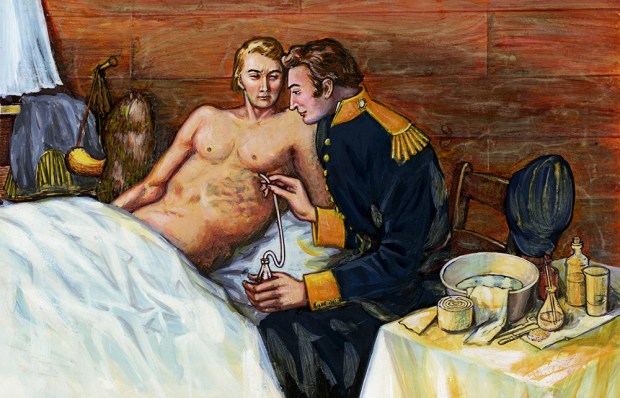Imagine you work for a grubby Soho publishing company (the fictional Glass Eye Press) in the late 1960s and an unhinged anarchist gets in touch, offering to send you his memoirs which will detail how and why he will commit the crime of the century. Such is the premise of Richard Milward’s clever dark comedy, Man-Eating Typewriter.
The novel’s severely unreliable narrator is Raymond Marianne Novak, the son of a French surrealist (semi-affectionately called Madam Ovary), who is brought up in a war-damaged London squat. Novak is breathtakingly ugly, pansexual, a dab hand at the old maquillage and can run up a spectacular cossie on his sewing machine in minutes. His adventures take him into high society, swinging 1960s London, a mental institution (where he is castrated), Gibraltar (where he falls for a Barbary ape) and Paris (where he gets involved in the riots).
While in the merchant navy Novak picks up Polari, a language popular in theatrical and gay circles, and Milward’s commitment to developing it into a full lingo is unsurpassed. For the uninitiated, then, this is likely to be a flummoxing read, at least for the first 50 pages or so. Milward throws the reader in at the deep end, with only a few attempts to provide translations (comparisons with A Clockwork Orange are unavoidable). There is a lot of sexual and scatological hilarity along the way, and depending on your temperament you may prefer to remain sheltered under Polari’s confounding blanket.
Novak certainly has a way with words – phrases that tickled my fancy include the unfairgound of inequality, the Dollydrums, mocking-janes, and the end justifies the meanies. To add to the wordplay, coded messages are sprinkled throughout the book – with Novak’s faulty typewriter playing a key role. Also, anagrams. And if that’s not enough, the employees of Glass Eye Press provide lengthy footnotes to Novak’s ramblings as they receive his novel in instalments. The publishers chronicle their growing bafflement, suspicion and fear of the mysterious ‘Mister Asterisk’ who is even more slippery than Nabokov’s Quilty. Providing something of a respite from Novak’s rambunctious memoirs, the footnotes offer a relatively measured perspective, revealing a parallel story of workplace ambition and sexual intrigue.
It is a risky narrative device, but Milward pulls it off; and while I found Novak to be a little tiresome at times, by the end I genuinely cared about what was going to happen to Stanley, Audrey, Davy, Emily, McKinley, Howling et al. Man-Eating Typewriter challenges the reader on several levels, but there is a lot to digest and enjoy.
Got something to add? Join the discussion and comment below.
Get 10 issues for just $10
Subscribe to The Spectator Australia today for the next 10 magazine issues, plus full online access, for just $10.
You might disagree with half of it, but you’ll enjoy reading all of it. Try your first month for free, then just $2 a week for the remainder of your first year.














Comments
Don't miss out
Join the conversation with other Spectator Australia readers. Subscribe to leave a comment.
SUBSCRIBEAlready a subscriber? Log in